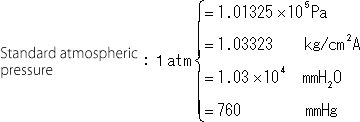
Pascal received a Royal Privilege in 1649 that granted him exclusive rights to make and sell calculating machines in France. He had been assisting his father, who worked as a tax commissioner, and sought to produce a device which could reduce some of his workload. Pascal began to work on his calculator in 1642, when he was 18 years old. It is not clear whether he ever saw Leibniz's device, but he either re-invented it or utilised Leibniz's invention of the step drum.įour Pascalines and a clone from Lépine on display at the CNAM museum in Paris In 1820, Thomas de Colmar designed his arithmometer, the first mechanical calculator strong enough and reliable enough to be used daily in an office environment. Gottfried Leibniz invented his Leibniz wheels after 1671, after trying to add an automatic multiplication feature to the Pascaline. Many later calculators were either directly inspired by, or shaped by the same historical influences which led to, Pascal's invention. Nine Pascal calculators presently exist most are on display in European museums. In 1649, King Louis XIV of France gave Pascal a royal privilege (similar to a patent), which provided the exclusive right to design and manufacture calculating machines in France. Pascal built around twenty more machines during the next decade, many of which improved on his original design. After 50 prototypes, he presented the device to the public in 1645, dedicating it to Pierre Séguier, then chancellor of France. This innovation allowed the device to resist the strength of any operator input with very little added friction. Pascal was also the first to shrink and adapt for his purpose a lantern gear, used in turret clocks and water wheels.

His innovation made each digit independent of the state of the others, enabling multiple carries to rapidly cascade from one digit to another regardless of the machine's capacity. Pascal's calculator was especially successful in the design of its carry mechanism, which adds 1 to 9 on one dial, and carries 1 to the next dial when the first dial changes from 9 to 0.

He designed the machine to add and subtract two numbers directly and to perform multiplication and division through repeated addition or subtraction.

Pascal was led to develop a calculator by the laborious arithmetical calculations required by his father's work as the supervisor of taxes in Rouen. Pascal's calculator (also known as the arithmetic machine or Pascaline) is a mechanical calculator invented by Blaise Pascal in the mid 17th century.
#Pascal to bar full#
Symbols, abbreviations, or full names for units of length,Īrea, mass, pressure, and other types.Top view and overview of the entire mechanism You can find metric conversion tables for SI units, as wellĪs English units, currency, and other data. The unit is named after Blaise Pascal, the eminent French mathematician, physicist and philosopher.Ĭonversion calculator for all types of measurement units. The pascal (symbol Pa) is the SI unit of pressure.It is equivalent to one newton per square metre. Its official symbol is "bar" the earlier "b" is now deprecated, but still often seen especially as "mb" rather than the proper "mbar" for millibars. The word bar is of Greek origin, báros meaning weight. The bar is a measurement unit of pressure, equal to 1,000,000 dynes per square centimetre (baryes), or 100,000 newtons per square metre (pascals).

Pascal to bar, or enter any two units below: Enter two units to convert From: You can do the reverse unit conversion from


 0 kommentar(er)
0 kommentar(er)
